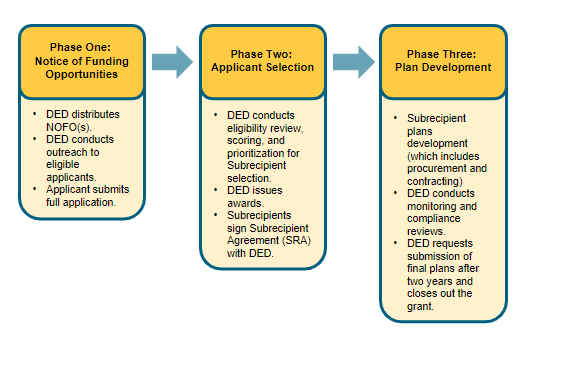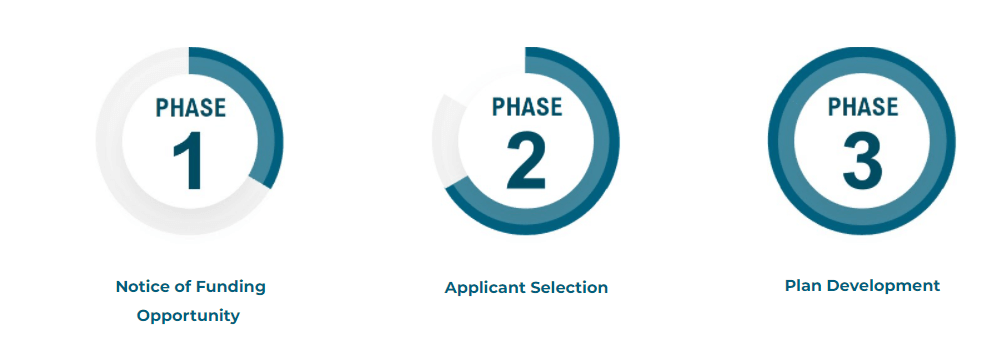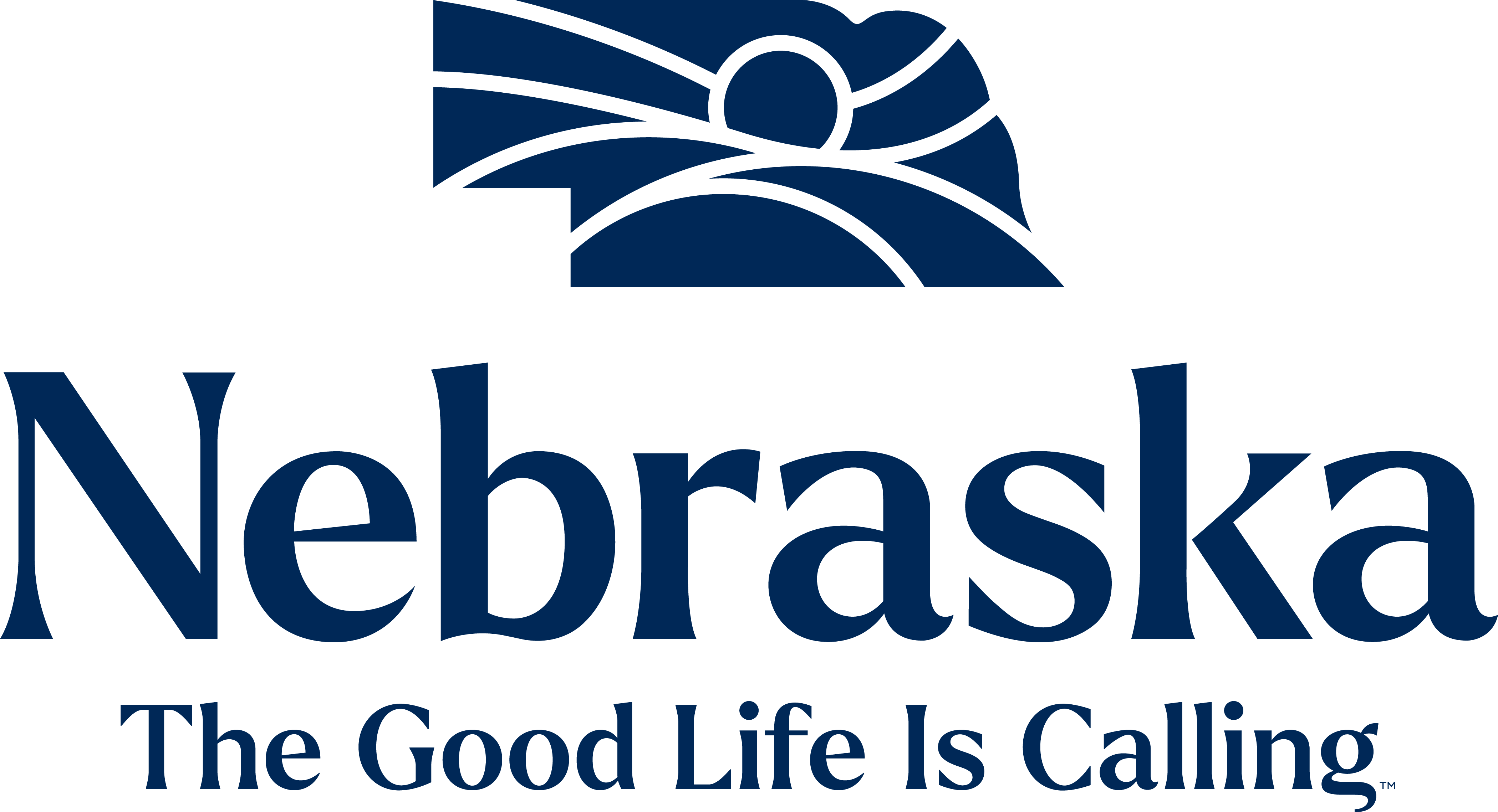Housing Resiliency Planning Program

Purpose
The Housing Resiliency Planning (HRP) Program will support local jurisdictions and economic development districts in the HUD-defined MID areas (Sarpy, Dodge, and Douglas counties) with developing plans for housing recovery, resilience, and affordability. To promote recovery and to prevent future catastrophic disaster-related damages, the overarching goal of the HRP Program is to promote comprehensive community resilience.
Process Overview

Want to Learn More?
For a full overview of the program and its associated policies and procedures, see the Housing Resilience Planning Program Guide.
Cross-Cutting Requirements
This section includes icons that capture CDBG-DR cross-cutting program requirements.
-
Blue icons indicate requirements that Subrecipients must meet under this program. Click on each icon’s hyperlink for more information.
- Gray icons indicate requirements that do not apply to this program, but may apply to other programs.
Housing Resiliency Planning Program Roadmap
This section is organized into three phases:
- Notice of Funding Opportunity: The State of Nebraska’s Department of Economic Development (DED) distributes Notice of Funding Opportunity and applicants complete the program application in AmpliFund.
- Applicant Selection: DED reviews applications. Successful Applicants receive an award determination from DED and sign a Subrecipient Agreement with DED.
- Plan Development: Subrecipients complete program activities and mandatory closeout steps.

Phase 1: Notice of Funding Opportunity
Notice of Funding Opportunity (NOFO)
DED releases a Notice of Funding Opportunity (NOFO) to the public. Following the release of the NOFO, Eligible Applicants have sixty (60) days to complete and submit the NOFO detailing a proposed planning project.
Outreach
DED conducts outreach to target stakeholders who are eligible for the program and informs them of the application process. Eligible Applicants include:
- Counties;
- Municipalities; and
- Economic Development Districts.
Eligible Applicants must be in the HUD-defined MID area, which includes Dodge, Douglas, and Sarpy Counties. Eligible Applicants are encouraged to engage and/or partner with community organizations that may have insight to innovative strategies to support the planning process (e.g., community colleges, universities).
Full Application
Applicant completes and submits the full application in AmpliFund during the application period.
The application process requires submission of:
- Program eligibility documentation that shows the Applicant is eligible for funding;
- Compliance documentation; and
- Funding information.
Helpful Resource(s)
- Application Information
- Application Attachment Checklist
- Application Risk Capacity Scoring Matrix
Phase 2: Applicant Selection
Preliminary Eligibility Review
Before prioritizing or scoring an application, DED conducts an initial review of each application to determine if the Applicant and project are eligible. To be eligible, applicants must meet the following criteria:
Applicant Eligibility
Applicant falls under one of the following eligible categories:
- Counties;
- Municipalities; and
- Economic Development Districts.
Activity Eligibility
Planning activities must focus on reducing flood vulnerability and include one or more of the following areas of focus:
- Housing recovery;
- Housing resilience; or
- Affordable housing.
Location Eligibility
Geographic area of the project falls under one or more of the following HUD-defined MID areas:
- Dodge County;
- Douglas County; or
- Sarpy County.
DED may request additional documentation if the Applicant has not submitted enough information to demonstrate their eligibility for the program. Applicants then have thirty (30) days to provide the necessary information. Eligibility does not assure assistance as there will likely be more eligible projects than can be served with available funds.
Project Prioritization
Following the initial eligibility review process, DED will use scoring and prioritization criteria to evaluate and prioritize applications. During this process, DED will rely on the following prioritization criteria:
- The area covered by the plan has a population that is greater than 50% Low- to Moderate-Income (LMI) persons; and
- Hazard vulnerability, which may be demonstrated by documenting that flooding occurred within the area covered by the plan during DR-4420.
DED will also conduct a risk assessment and capacity assessment, where Applicants deemed lower risk and with higher capacity will be preferred for awards.
Awards
Based on DED’s review, Applicants will be offered an award to participate in the HRP Program.
Notices of non-selection will be issued to Applicants not selected for award.
Consistent with HUD guidance, an active registration in the System for Award Management (SAM) is required to apply for an award and for DED to make a payment with HUD funds. Any entity applying for funds from DED (whether government, for-profit or non-profit) must have a Unique Entity Identifier (UEI) (formerly known as a DUNS number). An entity must maintain an active listing on sam.gov to be eligible for an award, and throughout the term of any associated funding agreement involving CDBG-DR funds. It is recommended that entities maintain a public (not private) listing. Entities not listed as public may experience application and payment processing delays. to be eligible for an award, and throughout the term of any associated funding agreement involving CDBG-DR funds. It is recommended that entities maintain a public (not private) listing. Entities not listed as public may experience application and payment processing delays.
Subrecipient Agreement
Successful Applicants accept offer and sign a Subrecipient Agreement with DED.
Phase 3: Plan Development
Plan Development
Subrecipients have two (2) years following award to develop and submit final plans to DED. Extensions may be considered on a case-by-case basis. DED will request documentation from Subrecipients requesting an extension.
Helpful Resource(s)
- Milestones, Objectives, and Example Tasks
Conduct Local Outreach
Subrecipients are required to conduct the following local outreach activities:
- Hold public meetings (e.g., virtual meeting, town hall) at least three (3) times during program implementation to identify public priorities and comments to the Plan.
- One meeting must be held within ninety (90) days of grant approval.
- One meeting must be held after completion of the Plan to elicit public comment.
- Identify stakeholders, such as non-profit organizations and public housing authorities, to convene discussion and garner their input at least once during the planning process.
- Provide access to the completed Plan via the Subrecipient’s website.
Fund Drawdown
DED provides CDBG-DR funds to the Successful Applicant on a reimbursement basis, with documentation of costs incurred. Subrecipients or Successful Applicants usually submit reimbursement requests to DED monthly.
Monitoring and Review
After signing the Subrecipient Agreement, DED monitors the project for compliance. For further detail, see the Monitoring and Compliance Plan.
Record Management
Subrecipients or Successful Applicants will maintain all records for at least three (3) years following the HUD and DED grant closeout.
Frequently Asked Questions
The State of Nebraska DR-4420 CDBG-DR Housing Resilience Planning Program Frequently Asked Questions (FAQs) guide contains answers to FAQs.
Contact Information
Questions and comments regarding CDBG-DR programs should be directed to the State of Nebraska’s Department of Economic Development (DED) via email at ded.cdbgdr@nebraska.gov or by calling (800)-426-6505.

